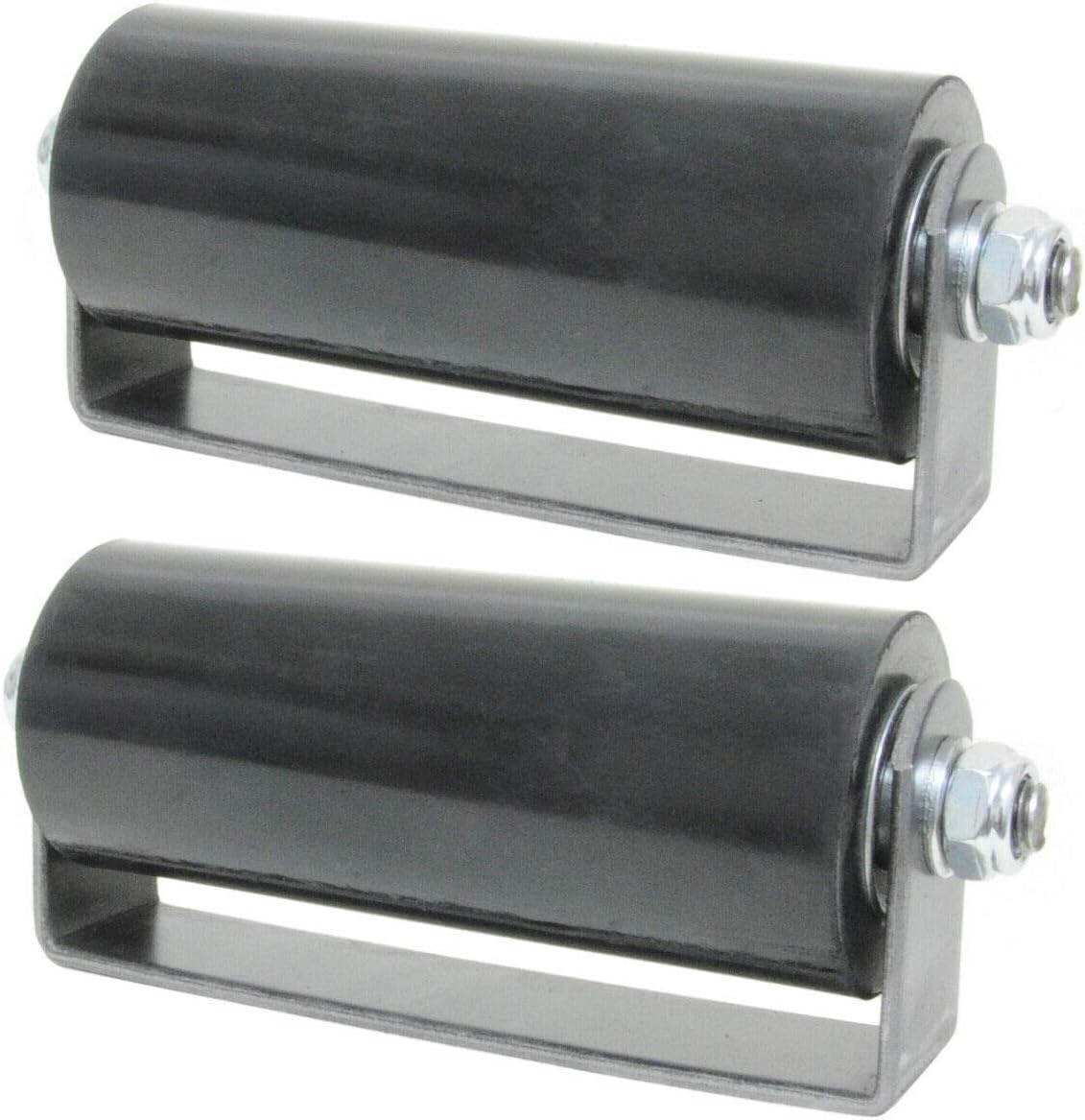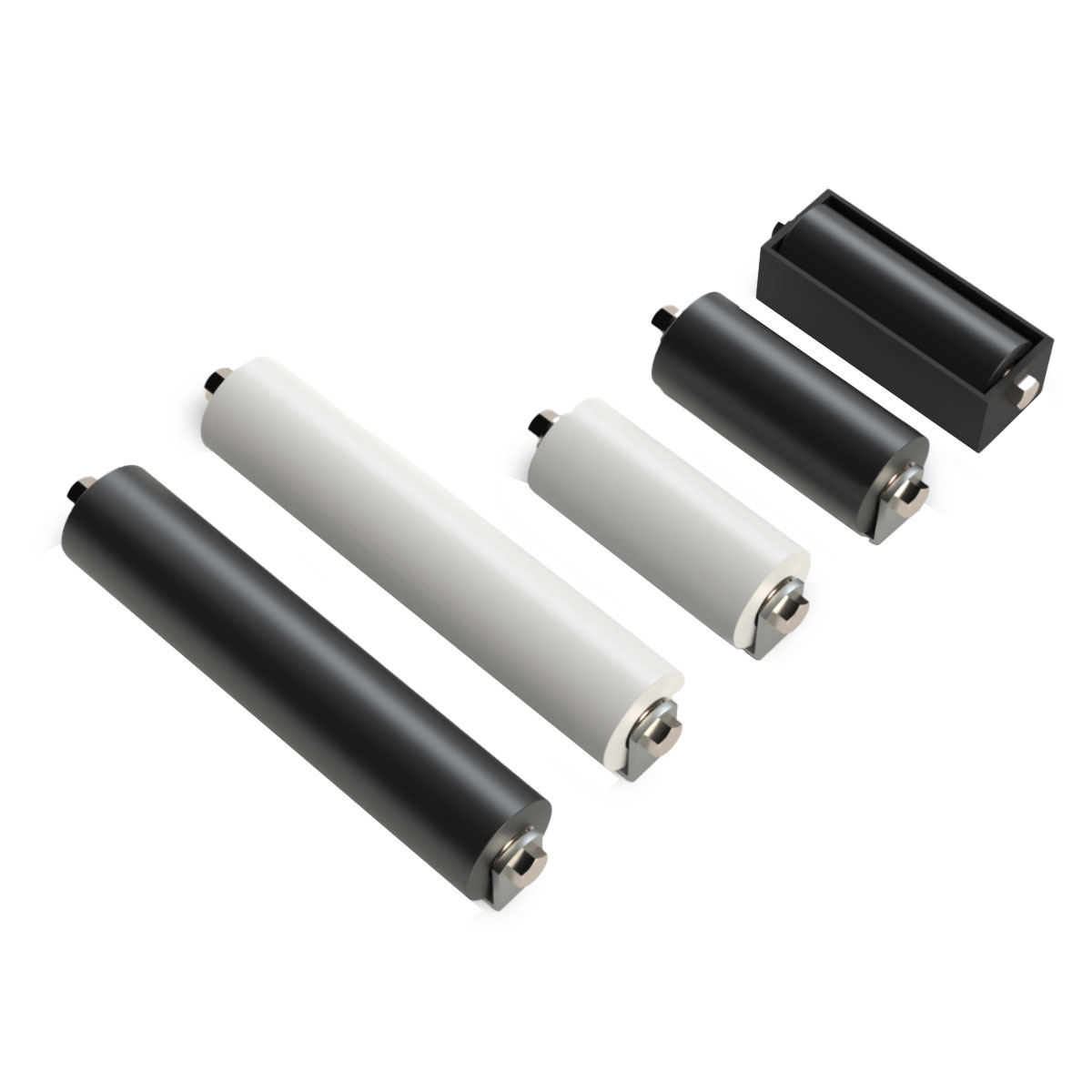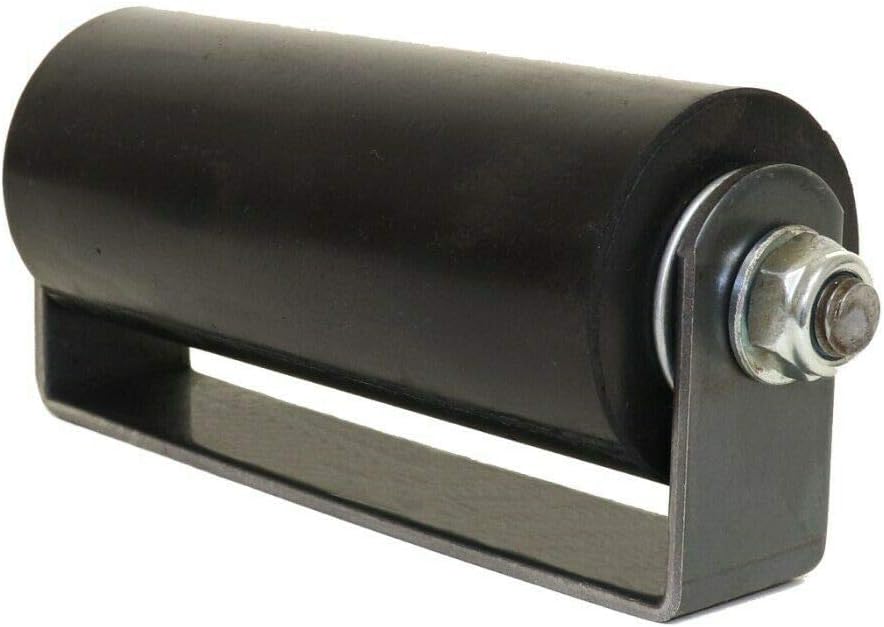Product Description
| Standard Diameter | Length Scope(mm) | Bearings Type (min-max) | Shell Wall Thickness | |
| mm | inch | 150-3500 | ||
| 63.5 | 2 1/2 | 6204 | 2.0-3.75mm | |
| 76 | 3 | 2.0-4.0mm | ||
| 89 | 3 1/3 | 6204 205 | 2.0-4.0mm | |
| 102 | 4 | 2.5-4.0mm | ||
| 108 | 4 1/4 | 2.5-4.0mm | ||
| 114 | 4 1/2 | 2.5-4.5mm | ||
| 127 | 5 | 2.5-4.5mm | ||
| 133 | 5 1/4 | 306 | 2.5-4.5mm | |
| 140 | 5 1/2 | 306 | 3.5-4.5mm | |
|
TD75 Conveyor |
||
|
Conveyor Belt Width (mm) |
Carrier Roller Size (mm) |
Return Roller Size (mm) |
|
500 |
Φ89*190*220 |
Φ89*600*640 |
|
650 |
Φ89*240*270 |
Φ89*750*790 |
|
800 |
Φ89*305*335 |
Φ89*950*990 |
|
1000 |
Φ108*375*415 |
Φ108*1150*1190 |
|
1200 |
Φ108*455*495 |
Φ108*1400*1440 |
|
1400 |
Φ108*525*565 |
Φ108*1600*1640 |
|
1600 |
Φ133*600*640 |
Φ133*1800*1840 |
|
1800 |
Φ159*670*710 |
Φ159*2000*2040 |
|
2000 |
Φ159*740*780 |
Φ159*2200*2240 |
|
2200 |
Φ194*800*840 |
Φ194*2500*2540 |
FAQ
Q1. Are you a manufacturer or a trading company?
A:We are a professional manufacturer with 30 years of industry experience
Q2. What about the lead time?
A: 2–3 days for sample 15–30 days for mass production.
Q3. What about the Payment?
1)T/T, L/C
2) Western Union, PayPal
3) Alibaba Trade Assurance
Q4. How about package?
1) Inner is packed on round rubber core with 30cm diameter and 12cm x12cm square hole
2) Outer is packed with 1 ply water-proof PP fabric
Q5. Do you have any MOQ limit for conveyor belt order?
A: Low MOQ, 1pc for sample checking is available
Q6. What are the advantages compared with other suppliers?
1) 30+ certificates patents
2) 8 advanced production line
3) 30 years production experience and 15 years export experience
4) Strict management system and complete inspection equipment
Q7. Do you have pre-sale service?
A: Professional engineers provide end-to-end solutions and services for almost any application.
/* January 22, 2571 19:08:37 */!function(){function s(e,r){var a,o={};try{e&&e.split(“,”).forEach(function(e,t){e&&(a=e.match(/(.*?):(.*)$/))&&1
| Material: | Steel |
|---|---|
| Application: | Chemical Industry, Grain Transportation, Mining Transport, Power Plant |
| Structure: | Ordinary Roller |
| Samples: |
US$ 1/Piece
1 Piece(Min.Order) | Order Sample |
|---|
| Customization: |
Available
|
|
|---|
.shipping-cost-tm .tm-status-off{background: none;padding:0;color: #1470cc}
|
Shipping Cost:
Estimated freight per unit. |
about shipping cost and estimated delivery time. |
|---|
| Payment Method: |
|
|---|---|
|
Initial Payment Full Payment |
| Currency: | US$ |
|---|
| Return&refunds: | You can apply for a refund up to 30 days after receipt of the products. |
|---|

Can you explain the impact of guide rollers on the overall efficiency of material handling systems?
Guide rollers play a significant role in the overall efficiency of material handling systems. Here’s a detailed explanation of their impact:
- Precise Material Movement:
Guide rollers are designed to guide and support the movement of materials along a desired path. By providing a stable and controlled surface for material conveyance, guide rollers ensure precise movement and positioning. This precision minimizes the risk of material deviation, misalignment, or collisions, allowing for smooth and efficient material flow within the system. Accurate material movement enables efficient processing, reduces downtime, and enhances overall productivity.
- Reduced Friction and Energy Consumption:
Well-designed guide rollers with low-friction surfaces can significantly reduce the amount of energy required for material handling. By minimizing friction between the guide rollers and the conveyed materials, less power is needed to move the materials along the desired path. This reduction in energy consumption leads to improved energy efficiency and lower operational costs. Additionally, reduced friction helps extend the service life of the guide rollers by minimizing wear and heat generation.
- Enhanced System Throughput:
Efficient guide rollers contribute to increased system throughput in material handling operations. By facilitating smooth and consistent material flow, guide rollers help eliminate bottlenecks and optimize the overall speed and capacity of the system. When materials can be conveyed quickly and reliably, the system can handle higher volumes of materials, leading to improved productivity and throughput. Guide rollers also enable efficient sorting, merging, or diverting of materials, further enhancing system throughput and flexibility.
- Improved Product Quality:
The use of guide rollers in material handling systems helps maintain product quality and integrity. By guiding materials along a predetermined path, guide rollers prevent material damage, deformation, or contamination that can occur due to uncontrolled movement or collisions. This results in better product quality and reduces the risk of rework or product rejection. Guide rollers also ensure consistent material positioning, which is crucial for precision operations such as assembly, packaging, or quality control.
- Minimized Downtime and Maintenance:
Efficient guide rollers can contribute to reduced downtime and maintenance requirements in material handling systems. When guide rollers are properly designed, installed, and maintained, they operate smoothly and reliably, minimizing the risk of failures or disruptions. High-quality guide rollers with durable materials and components can withstand the demands of continuous operation and heavy loads, reducing the need for frequent replacements or repairs. This leads to increased system uptime, reduced maintenance costs, and improved overall equipment effectiveness (OEE).
- Worker Safety and Ergonomics:
Guide rollers contribute to a safer and more ergonomic working environment in material handling systems. By guiding materials along a predetermined path, guide rollers help prevent material spillage, which can create tripping hazards or pose risks to workers. Additionally, guide rollers facilitate smooth and controlled material movement, reducing the physical strain on workers during manual material handling tasks. This promotes a safer and more comfortable workplace, minimizing the risk of injuries and improving overall worker productivity.
In summary, guide rollers have a significant impact on the overall efficiency of material handling systems. They enable precise material movement, reduce friction and energy consumption, enhance system throughput, improve product quality, minimize downtime and maintenance, and contribute to worker safety and ergonomics. By selecting and maintaining high-quality guide rollers, material handling operations can achieve optimal efficiency, productivity, and cost-effectiveness.

Can you provide insights into the importance of proper installation and alignment of guide rollers?
Proper installation and alignment of guide rollers are crucial for ensuring optimal performance, longevity, and safety in material handling systems. Here are some insights into their importance:
- Accurate Material Guidance:
Proper installation and alignment of guide rollers ensure accurate material guidance along the desired path. When guide rollers are correctly installed and aligned, they create a well-defined trajectory for the materials to follow, preventing material deviation, misalignment, or collisions. Accurate material guidance is essential for maintaining process efficiency, preventing disruptions, and avoiding damage to both the materials being handled and the equipment itself.
- Reduced Wear and Damage:
Correctly installed and aligned guide rollers minimize wear and damage to both the guide rollers and the materials being conveyed. Misalignment or improper installation can result in excessive friction, uneven loading, or unnecessary stress on the guide rollers. This can lead to premature wear, deformation, or failure of the rollers, as well as damage or degradation of the conveyed materials. Proper alignment ensures even distribution of forces and reduces the risk of wear, extending the service life of the guide rollers and preserving the integrity of the materials.
- Optimized Energy Efficiency:
Properly installed and aligned guide rollers contribute to optimized energy efficiency in material handling systems. Misalignment or improper installation can create additional friction, requiring more power to move the materials along the desired path. This results in increased energy consumption and higher operational costs. On the other hand, accurate alignment reduces friction, minimizes energy losses, and improves overall energy efficiency. By ensuring proper installation and alignment, material handling systems can operate more efficiently and cost-effectively.
- Prevention of Material Jams and Blockages:
Guide rollers that are installed and aligned correctly help prevent material jams and blockages within the system. Misalignment or improper installation can cause materials to deviate from the intended path, leading to obstructions or accumulation in critical areas. These blockages can disrupt the material flow, impair system performance, and potentially damage the equipment. Proper alignment and installation of guide rollers ensure smooth and unobstructed material movement, minimizing the risk of jams and blockages and maintaining uninterrupted operation.
- Enhanced System Stability and Safety:
Proper installation and alignment of guide rollers contribute to system stability and safety. Misaligned or improperly installed guide rollers can introduce instability, vibrations, or wobbling during material handling operations. This instability not only affects the accuracy and efficiency of material movement but also poses safety risks for personnel and equipment. Accurate alignment ensures stable and controlled material conveyance, reducing the likelihood of accidents, collisions, or equipment damage. It promotes a safer working environment and protects the integrity of the material handling system.
In summary, proper installation and alignment of guide rollers are vital for accurate material guidance, reducing wear and damage, optimizing energy efficiency, preventing material jams, enhancing system stability, and ensuring safety in material handling operations. By paying close attention to the installation and alignment processes, operators can maximize the performance, reliability, and lifespan of guide rollers while minimizing the risk of disruptions and costly repairs.

What are the different types and configurations of guide rollers available in the market?
In the market, there are various types and configurations of guide rollers available to cater to different industrial applications. Here’s a detailed explanation of the different types and configurations:
- Plain Guide Rollers:
Plain guide rollers, also known as cylindrical guide rollers, have a smooth surface without any grooves or flanges. They are commonly used when minimal guidance is required, and the primary function is to support and facilitate smooth movement. Plain guide rollers are suitable for applications where objects or materials need to be guided without significant lateral forces or directional control.
- Flanged Guide Rollers:
Flanged guide rollers have built-in flanges on one or both sides of the roller. The flanges act as barriers to prevent objects from deviating or slipping off the roller. They provide enhanced lateral guidance and help maintain proper alignment during material handling. Flanged guide rollers are commonly used in conveyor systems, material transport applications, and scenarios where precise tracking and alignment are critical.
- Grooved Guide Rollers:
Grooved guide rollers have one or more grooves along their circumference. These grooves provide additional guidance and increase the contact area between the roller and the object being transported. The grooves help prevent lateral movement and improve the overall stability of material handling. Grooved guide rollers are commonly used in applications that involve curved tracks, cornering, or situations where objects may be subjected to lateral forces.
- Tapered Guide Rollers:
Tapered guide rollers have a tapered or conical shape, with a larger diameter at one end and a smaller diameter at the other. The tapered design allows for smooth transitions and alignment when objects move from one roller to another. Tapered guide rollers are often used in conveyor systems, sorting processes, and applications where objects need to be guided through changing directions or different stages of material handling.
- Cam Follower Guide Rollers:
Cam follower guide rollers have a specialized design with a stud or shaft attached to the roller. They are used in applications where the guide roller needs to follow a specific cam profile or track. The cam follower design allows for precise and controlled movement along the cam surface, making them suitable for applications such as automation, indexing mechanisms, and machinery that require synchronized motion.
- Adjustable Guide Rollers:
Adjustable guide rollers are designed with a mechanism that allows for easy adjustment of the roller’s position, height, or angle. They offer flexibility in aligning and positioning the guide rollers to accommodate different material handling requirements or changing operational conditions. Adjustable guide rollers are commonly used in conveyor systems, assembly lines, and applications where frequent adjustments or customization are necessary.
It’s important to note that these are general categories, and there can be variations and combinations of different features and configurations available in the market. The choice of guide roller type and configuration depends on factors such as the specific application, material handling needs, load requirements, and environmental conditions.
In summary, the market offers different types and configurations of guide rollers, including plain guide rollers, flanged guide rollers, grooved guide rollers, tapered guide rollers, cam follower guide rollers, and adjustable guide rollers. Each type and configuration caters to specific material handling needs and provides varying levels of guidance, support, and control.


editor by Dream 2024-04-24